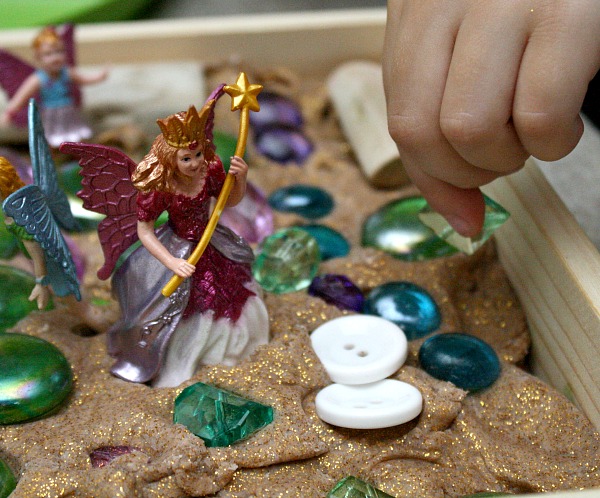An Analysis of the Art Learning Management Model Based on the Loose Parts Concept for Early Childhood Children
DOI:
https://doi.org/10.69598/decorativeartsjournal.3.36%20-%2056Keywords:
Loose Parts Concept Art, Learning Management Format, Early ChildhoodAbstract
The purpose of this research is to analyze the art learning model according to the concept of "Loose Parts" for early childhood children. and analyze the current formats of art learning management for early childhood in various formats. The sample group includes 40 art learning activities according to the Loose Parts concept. Data collection tools include an analysis table summarizing the formats. Arrange art learning according to the concept of Loose Parts for early childhood children. Consists of the following elements: 1) learning topics 2) activity units 3) materials 4) skills developed and a table summarizing the current art learning management model for early childhood in various formats, consisting of the following elements: 1) art learning management model 2) teaching components 3) component details teaching This is a secondary literature review. From related research documents Journal of art activities both domestically and internationally. and conclude with analytical tables and content analysis.
The results showed that the Loose Part art learning management model for early childhood is a highly flexible learning arrangement. It has an open-ended topic that does not restrict the work topic much to enable children to be flexible in their thinking and to create their own works as they imagine with materials. It is important that the material is an open-ended material that can be moved, assembled, dismantled, reconstructed, or redesigned in a variety of ways. When there is no fixed structure, children can unleash different thoughts and imaginations, be gender neutral, and can maximize their own imagination and creativity. Therefore, teachers, activities organizer, or parents must understand the development of learners. The ability to do anything, and the ability to do nothing, to make the activity effective and for the learner to truly develop.
The results of the research were based on the analysis of the art learning management model based on the concept of Loose Parts for early childhood children. and forms of art learning management for early childhood children in various forms at present, it was found that the art learning management model based on the Los Parts concept is an open-ended learning management without a clear learning topic. so that children can be flexible in their thinking and create their own works according to their imaginations through the use of materials Open-ended devices that can be found in everyday life. both man-made materials and natural materials. It is important that the materials must be open-ended materials that can be moved, assembled, dismantled, rebuilt or redesigned in a variety of ways. which, when there is no fixed structure, results in children liberating their ideas and different imagination from the original gender-neutral used imagination and creativity with full efficiency as a result, children have developed skills in various fields comprehensively.
References
กระทรวงศึกษาธิการ. (2560). หลักสูตรการศึกษาปฐมวัย พุทธศักราช 2560. โรงพิมพ์ชุมนุมสหกรณ์การเกษตรแห่งประเทศ
ไทย จำกัด. http://academic.obec.go.th/images/document/1590998426_d_1.pdf
ขนิษฐา บุนนาค. (2562). การจัดกิจกรรมศิลปะสร้างสรรค์ สำหรับเด็กปฐมวัย.
https://www.youngciety.com/article/journal/arts-for-kids.html
คณะกรรมการพัฒนาเด็กปฐมวัยแห่งชาติ. (2562). มาตรฐานสถานพัฒนาเด็กปฐมวัยแห่งชาติ. บริษัท พริกหวานกราฟฟิค. https://shorturl.at/qrsxP
ณัฐนรี บัวขม และ พรภวิษย์ เพ็งเอียด. (2566). Waldorf Education รูปแบบการศึกษาที่มาพร้อมกับการเรียนรู้ควบคู่ไปกับศิลปะและธรรมชาติ. https://mappalearning.co/waldorf-education/
ปิ่นทอง นันทะลาด. (2560). ศิลปะสำหรับเด็กปฐมวัย. https://shorturl.at/qxFQ0
ภาวิณี โตสาลี และ ณัฐทิญาภรณ์ การะเกต. (2565). การพัฒนาความคิดสร้างสรรค์ของเด็กปฐมวัยชั้นอนุบาลปีที่ 3 ด้วยการจัดกิจกรรมศิลปะสร้างสรรค์. วารสารลวะศรี มหาวิทยาลัยราชภัฏเทพสตรี, 5(1), 54-66. https://shorturl.at/IW239
สรวงพร กุศลส่ง. (2561). การพัฒนารูปแบบทักษะการศึกษาวิจัยด้านปฐมวัยด้วยการเรียนรู้ แบบนำตนเองของนักศึกษามหาวิทยาลัยราชภัฏเพชรบูรณ์. วารสารราชภัฏเพชรบูรณ์สาร, 20(2), 61-72.https://so05.tci-thaijo.org/index.php/jpcru/article/view/184460/129904
สำนักงานเลขาธิการสภาการศึกษา. (2565). แนวทางการจัดประสบการณ์การเรียนรู้แบบไฮสโคป (High/Scope Approach). บริษัท 21 เซ็นจูรี่.
สำนักงานเลขาธิการสภาการศึกษา. (2565). แนวทางการจัดประสบการณ์การเรียนรู้แบบวอลดอร์ฟ (Waldorf Approach). บริษัท 21 เซ็นจูรี่.
สำนักงานเลขาธิการสภาการศึกษา. (2565). แนวทางการจัดประสบการณ์การเรียนรู้แบบมอนเตสซอรี่ (Montessori Approach). บริษัท 21 เซ็นจูรี่.
สำนักงานเลขาธิการสภาการศึกษา. (2565). แนวทางการจัดประสบการณ์การเรียนรู้ แบบโครงการ(Project Approach). บริษัท 21 เซ็นจูรี่.
สำนักงานเลขาธิการสภาการศึกษา. (2565). แนวทางการจัดประสบการณ์การเรียนรู้แบบบูรณาการที่เน้นเด็กเป็นศูนย์กลางผ่าน “กิจกรรมหลัก 6 กิจกรรม”. บริษัท 21 เซ็นจูรี่.
อรุณฉัตร คุรุวาณิชย์ และ ชนันญา น้อยสันเทียะ. (2562). ทฤษฎีการเรียนรู้จากประสบการณ์ หรือ Experiential Learning Theory (ELT). https://www.lifeeducation.in.th/positive-education/
Currie, J. (2011). Art Activities for Kids. https://happyhooligans.ca/category/art-for-kids/
Davis, J. (2015). Ocean Theme Transient Art Activity. https://shorturl.at/hsFO2
Early Learning. (2023). Playdough Trays for The Whole Year. https://shorturl.at/wDIMT
Evans, S. (2020, October 15). Fantastic Fun and Learning. https://shorturl.at/achkC
Fix, A. (2021, March 3). Loose Parts Art Activity for Preschoolers. https://shorturl.at/nsBKL
Gilman, S. (2018, August). The Arts, Loose Parts and Conversations.Journal of the Canadian Association for Curriculum Studies, 16(1), 90-103.
https://jcacs.journals.yorku.ca/index.php/jcacs/article/view/40356/36367
Kindergarten Connection. (2023, August 2). 12 Months of Classroom Activity Kits. https://shorturl.at/JL145
Little Learning. (2020). Sensory Activities. https://littlelearningclub.com/sensory-activities/
Phil, A. (2022). The Littles and Me. https://shorturl.at/gOU08

Downloads
Published
How to Cite
License
Copyright (c) 2024 DEC Journal

This work is licensed under a Creative Commons Attribution-NonCommercial-NoDerivatives 4.0 International License.
Published by Academic Affairs Division, Faculty of Decorative Arts, Silpakorn University. The copyright of the article belongs to the article owner. Published articles represent the views of the authors. The editorial board does not necessarily agree with and is not responsible for the content of such articles.


